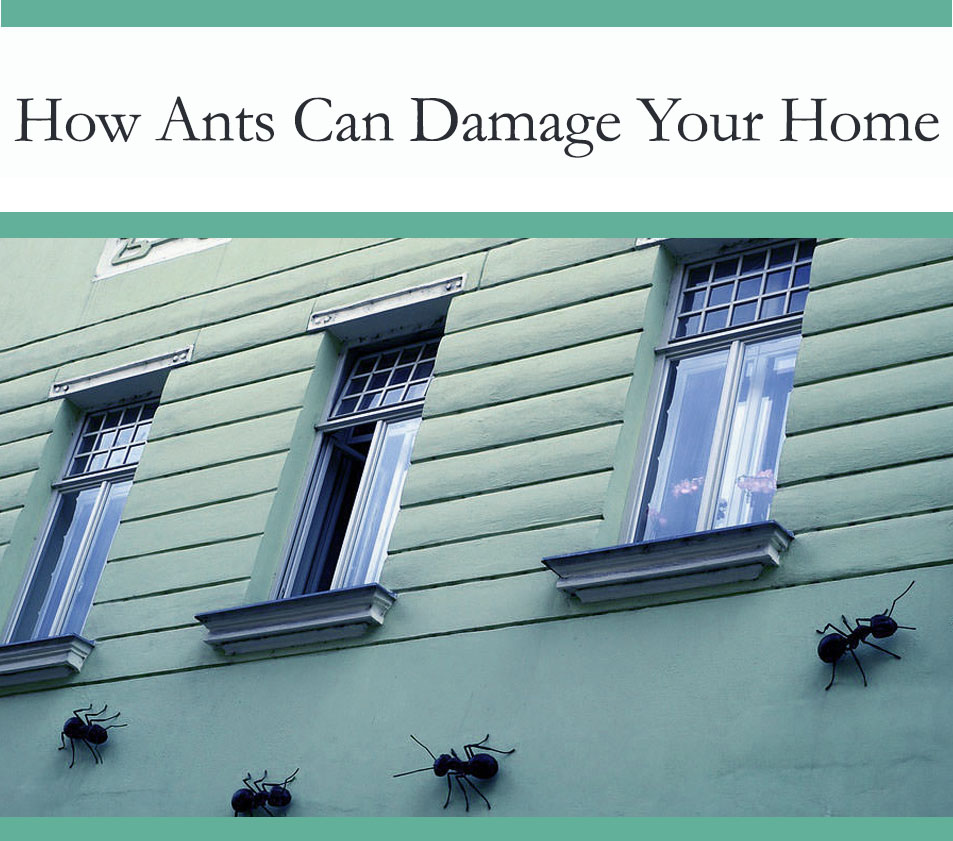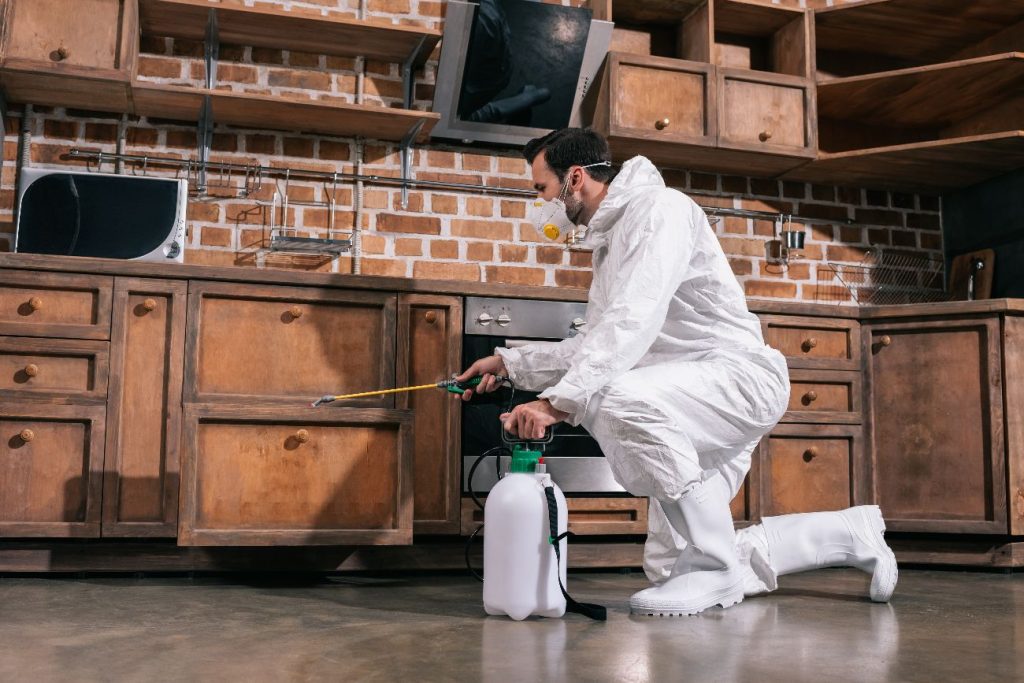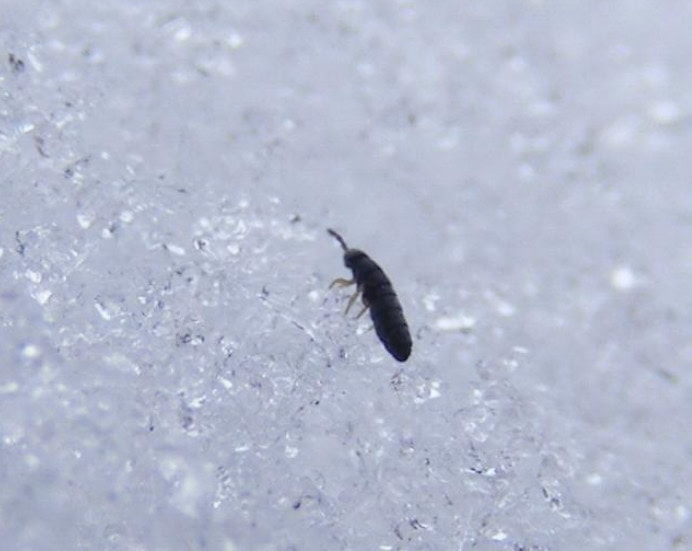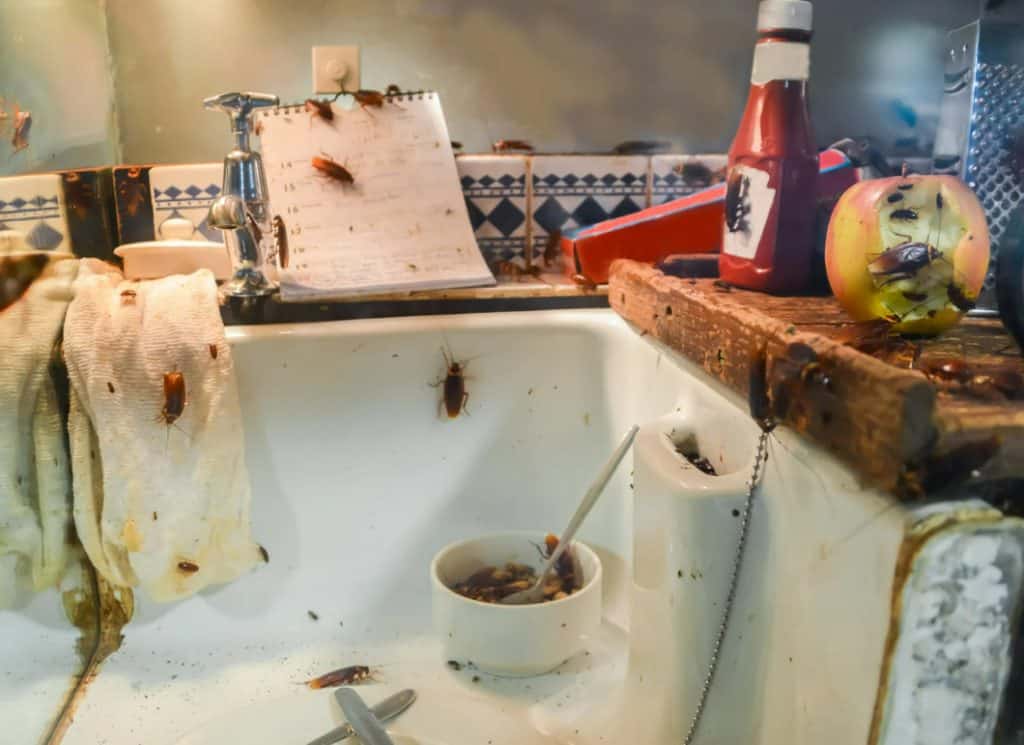
Do you want the bad news or the bad news? In most cases, ants are what is known as a nuisance pest. Unlike some other pests, they don’t cause diseases. And most of them are so tiny, it’s hard to imagine them doing any damage to a house.
But the truth is, ants and termites can and cause serious damage to wooden building structures, including your home.
The main culprit behind this damage is the carpenter ant. These giants, the largest species in North America, build their nests in wood. And their jaws are powerful enough to carve holes even in solid, undamaged wood. The kind of wood many people’s homes are made out of.
Carpenter ants cause extensive damage by burrowing into wood to create or expand nesting sites.
It’s possible to have a problem with these creatures without knowing it, at least for a while. The signs of a carpenter ant infestation can be subtle. But these creatures work night and day, carving out tunnels in the wood of your home in which to hatch their eggs. And if left alone long enough, these ants can hollow out wooden beams to the point that they become structurally unstable. It’s estimated that the Carpenter ant causes $5 billion worth of damage every year in the United States alone.
That doesn’t mean carpenter ants are the only ants you need to worry about in the home, though. Fire ants, which generally live outside, have been known to create nests inside the walls of buildings. Moisture ants like to build nests in rotten wood, so if you have water damaged areas in your home, this species could invade. Pharaoh and Argentine species, meanwhile, like to build their nests indoors and rarely venture outside except in hot climates like that of Florida. But none of these species is considered a structure destroying pest. Only the carpenters have that dubious distinction.
Termites vs Ants
Of course, ants aren’t the only bug that can damage your home. Termites are also a significant pest of structures. And, at least on a superficial level, they seem similar to ants. Both are social insects, forming colonies of individuals that are mutually dependent on one another. Both have societies organized into separate castes with clearly defined roles in the life of the colony. Both are capable of nesting in wood.

But despite these similarities, termites and ants are quite different. In fact, termites are more closely related to cockroaches than they are to ants. From a homeowner’s perspective, the most significant difference is that termites only nest in rotten wood. So while they are most definitely a problem, they are often just as much a symptom of a larger issue.
Carpenter ants, on the other hand, can build a colony in undamaged wood. Also, unlike termites, these bugs don’t actually eat wood. Instead, they hollow it out and use it as a place to raise their young. Not that it matters very much when it’s your wooden beams they’re chewing into. But it is important to understand the difference between termites and carpenter ants, because the way to deal with these different species varies a lot.
How Do Ants Damage A House?
By chewing. Carpenters have powerful jaws that are more than capable of carving holes in timber. Once they have a mouthful, the ants will carry it to the entrance of the colony and spit it out. For this reason, one of the most characteristic signs of a carpenter nest is small piles of sawdust, known as frass, underneath holes in wood.
It’s laborious work. But ants are known for their work ethic. These creatures are relentless in their efforts, and over time, they can excavate surprisingly large nests in the wooden beams of your home.
As the ants hollow out the beams, the structure becomes weaker. If left unchecked, especially in a loadbearing joist or column, the beam could eventually break.
To put things in perspective, it probably won’t get as bad as this. It would take a lot of ants a lot of years to damage a building so much that it collapsed. But a more frequent event is that the ants weaken the structure of the home so that the next time a storm or other natural event hits, the house doesn’t stand up to the punishment as well as it should.
What To Do If You Have Carpenter Ants
Correctly identifying different species of ants isn’t easy, even for professionals. While it’s true that carpenters have a distinctive look, you can’t always rely on their size to give away their identity. After all, some individual carpenters are no bigger than regular ants, especially in the spring when a colony is just getting started on its seasonal growth.

However, if you’ve seen robust ants that are over half an inch in length, the chances are good that you have carpenter ants. And if you’ve found small piles of fine sawdust accumulating under holes in the wall, the identity of the bugs is even more certain.
So what can you do about it? Well, it depends on the nature of the problem. Are you seeing carpenters inside or outside? Do you have reason to believe they have a colony on your property, or are you simply seeing foragers wandering around?
Carpenters are relatively poor foragers, and as a result, can wander hundreds of yards from the colony in search of food. Also, these creatures have multiple nests that can be hundreds of feet apart. So if you’re seeing carpenters on your property, the nest may be located on a neighbor’s land, not yours.
In these cases, a barrier treatment is about all you can do. There are multiple products available that, once applied, will deter carpenters. One of the best, if you can get it, is Demon Max. This professional-grade pesticide not only kills ants on contact but offers a powerful residual effect. It will continue to kill ants that come into contact with sprayed areas for months following application. Or, if you want a more user-friendly and readily available solution, try Ortho Home Defense. This product comes ready to use so that you don’t have to worry about buying extra equipment or mixing pesticides yourself.
If you’re seeing carpenter ants on your property, the nest may be located on a neighbor’s land, not yours.
For a less toxic option, try Borax or Diatomaceous Earth. This naturally occurring substance is harmless to people and pets but deadly to insects. It can be used indoors or outdoors to deter carpenters from entering your property and killing any that try.
However, if you’ve located an actual carpenter colony, you’ll need to deal with the problem head-on. This is something that professional pest control companies can charge thousands of dollars for, and it can be tricky. The hardest part is finding the nest. Once you’ve done that, you can treat it directly. Demon Max and Ortho Home Defense can both be used for this purpose, but if the nest is inside a wall, roof, or other structural void, another useful product is Termidor Foam. This pesticide, injected into a carpenter nest, will expand to fill the tunnels and galleries to reach as many bugs and eggs as possible. It also has a residual effect that will continue to kill bugs long after the product has dried.
If you are looking for a complete package that provides all the products you need to combat these ants both indoors and outdoors, then we recommend this Indoor & Outdoor Ant Kit. It has been specially designed to give you all the tools in one handy kit.
Destroying a carpenter nest is not a job to take on lightly. Even professionals often get it wrong. So there’s no shame in calling in outside help to make sure you get it done right. Any reputable company should offer a warranty on their treatment so you can be confident that the problem will be solved.
Once the colony has been destroyed, you may need to replace the wood that they have damaged. If the damage is extensive, it may be necessary to talk to a structural engineer or other professional that can advise on the correct way to repair the damage the insects have caused.
Flying Ants

Did you know that carpenter ants can fly? Some of them, anyway. At certain times of the year, usually once in spring and again in fall, carpenter nests will begin to produce winged reproductive members. This is how colonies spread. While regular foraging workers are sterile and exclusively female, winged ants can be either male or female and are capable of reproduction. They do this by taking to the air and mating with one another, after which the males die. The mated females then fly off to start nests of their own.
The reason this matters is because if you start seeing flying ants inside your home in large numbers, it’s a good indication of the presence of a colony. Normally, a carpenter colony is quite discrete and can stay hidden inside a wall for a long time before you notice its presence. Often the first sign that they are there is the emergence of these winged reproductives.
Be careful, though. Carpenters aren’t the only species that reproduce in this way. Many other ant species also have winged reproductive members, and these members are often larger than the regular workers, which can lead to misidentification with the carpenter type. If in doubt, try capturing a few of the ants without damaging them too badly and taking them to a local entomologist, University department, or pest control company. They should be able to identify the ants for you.
If reproductive carpenters are emerging inside, it’s a good indication that there is a nest in your home. Of course, a stray bug or two can fly in from outside, especially since they are clumsy flyers. But if you see more than a handful of these winged creatures, it’s time to entertain the possibility that the carpenters have made your home theirs.
Other Species
Carpenters are far and away the most destructive species out there. Along with termites, they do the vast majority of damage to buildings out of all insects. But there are some instances of structural damage that can be caused by other bugs. Pavement ants, carpenter bees, powder post beetles, and deathwatch beetles can all cause some minor damage to your home.
Pavement Ants

Much smaller than the carpenter variety, pavement ants are commonly seen on sidewalks and other paved areas in the summer. They like to build colonies in sandy soil, often underneath concrete. Sometimes, they can also enter into buildings via cracks in the foundation.
While this species may not damage the structure of a home, their nest building can undermine concrete slabs and paved driveways. Eventually, this will cause the paving to buckle and crack. So while they are not a threat to your home, they might be a threat to your driveway.
Carpenter Bees

This species of bee also likes to nest in wood. Fortunately, unlike other bee species, carpenter bees are solitary. They will bore a tunnel into a beam, lay a single egg inside and then close the hole behind them with a plug of chewed-up leaves. They prefer unvarnished and unpainted wood and are usually found on the exterior of the home. Because the holes they create are quite small, they are unlikely to do real structural damage to your home.
Powderpost Beetle

This beetle is one of the better-known members of the group of insects known as lyctids. It takes its name from the very fine sawdust it creates as it bores into the wood, almost like powder. Like carpenter ants, the presence of these beetles can often be detected by the presence of small piles of this very fine sawdust under holes in the wood.
Powderpost Beetles are solitary and seek out areas on which to lay their eggs. It’s the hatched larvae of the species that cause damage to wood, chewing into it to create a chamber to pupate in. Although they are not social, they are often found in groups. If you have some untreated wood that is attractive to this beetle, more than one individual is likely to find and make use of it.
This insect rarely damages would enough to become a serious structural issue. However, if left untreated over a long period, the holes they create can weaken wood significantly and that’s when ants damage home.
Deathwatch Beetles

These beetles get their intimidating name from their eerie habit of tapping their mandibles against the inside of the tunnels they create. Since they are largely nocturnal, this noise was often heard by people sitting up at night with an ill friend or relative and was believed to indicate that the person’s death was near.
In reality, Deathwatch beetles bore into wood as a place to lay their eggs. As with other species, it’s the larvae that do the damage. Unlike other beetles, while these creatures are solitary, they may attack wood in significant numbers if the environment fits their needs.
Conclusion
There are plenty of insect species that are capable of causing damage to your home or other buildings. However, in most cases, the damage is slight and may never become a serious issue.
When it comes to serious structural damage, there are really only two insect species you need to worry about: termites and carpenter ants. And while termites do a tremendous amount of damage, costing homeowners billions of dollars each year, the destruction they cause is limited to wood that is already rotted.
That’s not the case with carpenter ants. Their ability to attack even solid wood makes them one of the most significant pests in the US. And their habit of creating multiple nests, coupled with their swarming behavior, means that almost any home can be at risk from these invaders.
Their ability to attack even solid wood makes carpenter ants one of the most significant pests in the US
When it comes to preventing carpenters, barrier treatments can certainly help. However, if you live in a wooded area, these bugs are simply a fact of life. The best thing you can do is keep a close eye on your home and respond immediately to any structural damage you find or any colonies that appear on your property. Remain vigilant, and address any issues as soon as they begin. It’s a lot easier to deal with carpenter ants when they first start creating a nest that is to wait a while. And the longer you leave a colony untreated, the more damage they will do.






